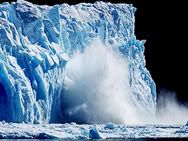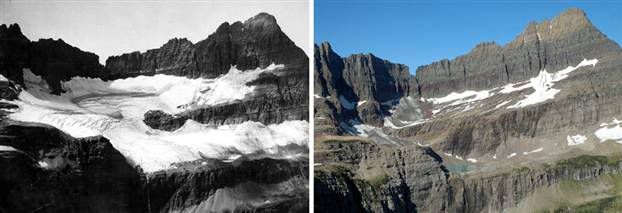Global warming ad makes a stark pointTrain barrels down on child standing on tracks
MSNBC
Updated: 11:47 a.m. ET March 24, 2006
A new TV campaign by the Advertising Council and an environmental group uses stark imagery of a child about to be run over by a train to drive home its point on global warming.
“The new global warming campaign marks a watershed moment in the effort to stir the public’s consciousness about global warming,” the nonprofit Council and partner Environmental Defense said in a statement Thursday announcing the campaign.
The train ad starts with an adult standing on tracks and asking why he should worry about a problem that he might not live to see. He then moves away, revealing a girl also standing on the tracks as the train comes barreling down.
Story continues below ↓ advertisement
The ad is one of several public service TV and radio announcements unveiled by the partners.
“Global warming has reached the point where it threatens the world we leave our children and grandchildren,” Fred Krupp, head of Environmental Defense, said in the statement. “This campaign is a wake up call about the urgency of the problem.”
more...
http://msnbc.msn.com/id/11992630/
I recommend watching the video.
Global Warming Might Sink America's CoastsMarch 26, 2006 — With glaciers in Greenland and Antarctica melting into the ocean at up to double the speed of just a few years ago, all the water has to go somewhere — and that could mean an end to America's coastlines as we know them.
The water wouldn't come crashing down city streets the way it did in the movie, "The Day After Tomorrow." Instead, according to the new issues of the journal, "Science," the oceans fed by rapidly melting glaciers would rise steadily over years — a total of 13 to 20 feet by the end of this century, threatening huge chunks of American cities like New Orleans, Miami, Charleston, S.C., and New York.
In the future, storms could regularly swamp New York's subways and tunnels if barriers aren't built to hold back the rising tides, according to Vivien Gornitz, a sea level specialist for NASA. Even pricey riverfront properties in the borough of Manhattan may be under water periodically.
This is the sort of thing that happens in Venice, Italy. Each winter they have floods or high tides and have to put down temporary boardwalks as walkways to keep people out of the water.

Ice falls from the Perito Moreno Glacier in Santa Cruz province, Patagonian southern Argentina , some 3,200 kilometers, (2,000 miles) south of Buenos Aires, Thursday, Oct.16, 2003. A study suggests, that melting of glaciers in the Patagonian ice fields of southern Argentina and Chile has doubled in recent years, caused by higher temperatures, lower snowfall and a more rapid breaking of icebergs. (Natacha Pisarenko/ AP Photo )
http://abcnews.go.com/GMA/GlobalWarming/story?id=1769298&page=1Glaciers vanish in before-and-after photos
These photographs show how Glacier National Park's Shepard Glacier has changed over 92 years, as seen from Pyramid Peak. The left picture was taken in 1913, and the right picture was taken in 2005.
By Bjorn Carey
Updated: 4:34 p.m. ET March 24, 2006
Glacier National Park might soon need a new name.
The Montana park has 26 named glaciers today, down from 150 in 1850. Those that remain are typically mere remnants of their former frozen selves, a new gallery of before and after images reveals.
All arguments about global warming aside, now is a time of clear retreat by age-old ice packs in many locations around the world. Some retreat just a few inches or feet per year, but others are melting faster than a snow cone in Texas.
Montana might not be the first place that comes to mind when you think of glaciers. Elsewhere, however, the situation is similar.
The Columbia Glacier in Prince William Sound, the world's fastest-melting glacier, slides into the ocean at a rate of 80 feet (24 meters) per day. This tidewater glacier is up to 3,000 feet (900 meters) thick, but it has thinned up to 1,300 feet (400 meters) in places during the past 25 years, and researchers say it's stretching like taffy. Each year, it dumps 2 cubic miles (8.3 cubic kilometers) of ice into the sound.
http://msnbc.msn.com/id/11996943/